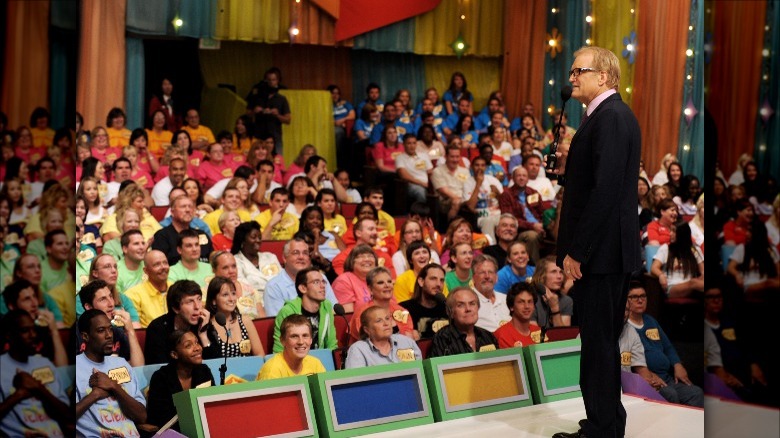What Really Happened When A Price Is Right Contestant Made A Perfect Bid
We may receive a commission on purchases made from links.
Whether you think of all the kisses that former host Bob Barker got, the quirky outfits, or the excited people jumping up and down when they hear they've won, there's likely a core image that comes to your mind when you think of "The Price Is Right."
Per NPR, "The Price Is Right" first aired from 1956 to 1965 before being canceled and then revived in 1972. Currently hosted by Drew Carey, "The Price is Right" seems like your average light-hearted gameshow. If you want to get serious about winning, though, you're going to have to get a strategy.
As easy as it seems to be, there's only been one person to play a perfect game in the show's decades-long history. As noted by Urbo, Terry Kniess made a perfect bid on a showcase in 2008, and the story behind his win is a whole lot more than you might think. It involves a whole lot more than just luck, too. Kniess' win was a stroke of absolute genius, and after he was a contestant on the show, "The Price Is Right" was literally never the same.
Terry Kniess' love for patterns landed him a perfect guess
The "Price Is Right" concept is pretty simple. All you have to do is guess the prices of the products displayed to get the prizes. Terry Kniess didn't like that whole guessing thing though, so he decided to take matters into his own hands, notes Esquire. While the rest of the hopeful contestants were designing their on-air outfits, Kniess was doing some serious preparation to win it all.
According to Urbo, Kniess and his wife realized that "The Price Is Right" used the same products over and over, just in a different order. The publication states that he noticed the pattern thanks to his previous jobs as a meteorologist, predicting weather patterns, and at a casino working surveillance.
After that, the pair took the time to watch every episode of the show, make flashcards, and study the prices before they appeared on the show. Kniess only needed luck to actually get picked to "come on down" at the beginning of the show. After that, he used a strategy of memorizing every single price to get himself to the final showcase.
His final showcase number was more random than you'd think
As any lover of "The Price Is Right" knows, only two people are in the final showcase. The host names off a bunch of prizes and contestants guess how much they think it costs. As seen in a clip of the winning moment that was uploaded to YouTube, Terry Kniess' competition came within $424 dollars of her showcase's amount, which would be an incredible play any other day. Unfortunately for her, Kniess nailed the exact number, guessing $23,743.
The number $23,743 is a very exact number, so how did Kniess nail it? According to Urbo, he knew that the final showcases were worth about $24,000 and then used his wedding anniversary, April 7, and his wife's birth month, March to get the final three numbers.
Kniess' strategy paid off — big time. He won $56,437.41, and his prize package included vacations to South Africa, Scotland, Chicago, Canada (via Urbo).
The show has literally never been the same since
Terry Kniess' 15 minutes of fame on "The Price Is Right" inspired a 2017 award-winning documentary called "Perfect Bid: The Contestant Who Knew Too Much." You can watch it on Amazon Prime Video, but don't expect to pick up pointers on how to copy his strategy as it won't fly these days.
As multiple outlets point out, host Drew Carey was not all that excited when Terry Kniess won the showcase. In fact, as can be seen in the clip uploaded to YouTube, he showed less enthusiasm when Kniess' nailed the number on the head than when a winner just gets close. After coming to the conclusion that what Kniess did technically wasn't cheating, the show had to change the way they operated, and "The Price Is Right" now switches up the items and prices so no one can memorize prices ever again.
"The producers now change the brands of products that they use and alter small details that will affect prices (for example, changing a stereo package in a car can boost or lower the sale price)," Urbo explains. "Fans can still study the show to get an idea of how much things cost, but memorizing the prices is now almost impossible."



